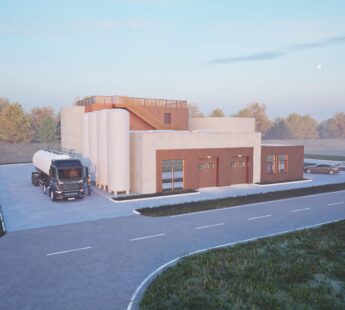News
District energy
District heating
Energy storage
+4
“World’s smartest” and “world’s first”: new heat pumps cut CO2 emissions


Heating and cooling accounts for half of all energy consumption in the EU. Moreover, the lion’s share of this is still generated from fossil fuels, while around 18 per cent is generated from renewable energy, according to the EU.
However, in Denmark things are looking different. One reason for this has to do with the 60,000 kilometres of district heating network below Denmark's surface. In this network, around 60 per cent of the heat comes from green energy sources.
The potential for improvement and an increased share of green energy is continuously being realised. The Danish Heat Roadmap, which is mapping the European heating and cooling consumption, suggests in a recent report that CO2 emission can be reduced in the heating and cooling sector by as much as 86 per cent.
The solutions that are supporting this reduction has to do not only with a district heating network, but also with innovative new heat pumps – and Denmark is at the forefront of developing and implementing those.
-Related solution: District Heating and Cooling in Greater Copenhagen
Green heat from groundwater
One of the industry-leading solutions from Denmark is the new smart pump system ‘Flexheat’, developed in a partnership between HOFOR, the Technical University of Denmark and Johnson Controls at EnergyLab in Copenhagen. The concept is to provide environmentally friendly heat to customers by extracting heat energy from the groundwater and utilising it when electricity is cheapest, reports the Danish media CleantechWatch.
When wind turbines run at high pressure at night and electricity consumption is low, the heat pump utilises the cheap electricity prices to supply similarly cheap heat to customers through an algorithm. Meanwhile, the pump can store heat for later use in a large water tank.
Following the implementation of the Flexheat pump, HOFOR could boast of having cut 6 per cent of heat production costs.
-Related solution: HPCOM: Intelligent communication between heat pumps
’The world’s smartest heat pump’
The Flexheat pump can furthermore help to ensure a balance between consumption and production, since it achieved a regulation time on the heat pumps performance of only 90 seconds – where it was previously four minutes. This means that the system can respond much quicker to changes in production and consumption of electricity and thereby relieving stress on the electricity grid.
This increases green power production as, for instance, wind turbines currently have to turn down production during strong winds and low consumption – thereby effectively wasting green energy.
"The heat pump doesn't just respond to price signals, but also helps stabilise the grid. Heat pumps have not been used like this before," said Tore Gad Kjeld, energy planner at HOFOR to CleantechWatch, and continued:
"It is a bold statement, however, I dare safely say that – as far as we know – we have developed the world’s smartest heat pump.”
-Related solution: District heating supplying clean energy
First of its kind: non-emission seawater pump
A new green way of using one of the world’s most abundant resources may just have been discovered in the bay of the Danish city Aarhus. The citizens of Aarhus are now able to get climate-friendly district heating from the seawater using a new seawater heat pump that does not emit greenhouse gas when producing heat. The world’s first of its kind, according to the district heat provider AffaldVarme Aarhus, who have put the pump into operation.
The new technology is that seawater is fed directly into the evaporator of the heat pump. Here the seawater is boiled at +5 degrees Celsius, and therefore, unlike other heat pumps, the heat pump does not need any refrigerant. There is a great climate-friendly potential in reducing the use of greenhouse gases, e.g. for refrigerants. This in turn shapes a great potential for the seawater pump to be exported and used in other countries as a climate-friendly heat solution.
There will be best efficiency of the heat pump in the summer when the temperature of the water is highest. For example, if seawater is 16 degrees °C, 13 degrees °C is used for district heating, and the water is sent back in Aarhus Bay at 3 degrees.
At the moment, one seawater heat pump is installed. It has been tested during the fall of 2019 and is now operational. The next heat pump is expected to be installed by March 2020.
Sources:
You should consider reading
Perspective
Sector coupling
+9
New white paper: Unlocking the potential of renewable energy through sector coupling
23 October 2024solutions
Combined heat and power production
+6
CopenHill: The story of the iconic waste-to-energy plant
20 November 2024solutions
Energy efficiency in buildings
+2















